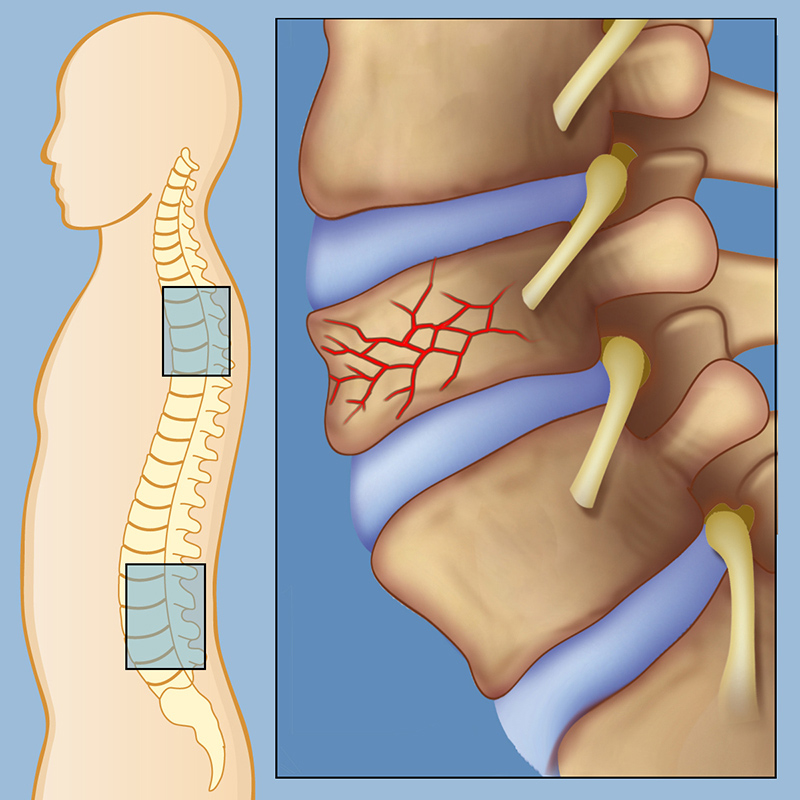
A spinal compression fracture occurs when part of a vertebra, a crucial bone in the spine, collapses. The spine is composed of vertebrae that have two main sections: the vertebral body, which is the block-like portion, and the vertebral arch, a ring-shaped section that forms the roof of the spinal canal, acting as a protective shield for the spinal cord.
Compression fractures are a type of break in the vertebrae. They are prevalent and are often a result of the vertebral body suffering from a crush or wedging injury. When these fractures occur, it can lead to the affected vertebrae becoming shorter in height due to the collapse.
The leading cause of these fractures is osteoporosis. However, they can also be attributed to injuries to the spine, primary or metastatic cancer of the bone, infections, and even some genetic diseases like osteogenesis imperfecta, especially in children. Children are also at risk of compression fractures due to the use of steroid medications. In more severe cases, significant trauma, such as that from a motor vehicle accident or a major fall, can cause burst fractures. Burst fractures account for 14% of all spinal injuries, and they compress the bone significantly.
Typically, compression fractures of the spine are most common at the bottom of the thoracic spine (T11 and T12) and the top of the lumbar spine (L1). They result from excessive pressure on the vertebral body, often due to a combination of bending forward and downward pressure.
Various classification schemes exist to describe and help treat burst fractures. However, irrespective of their type, compression fractures can have a significant impact on one’s health, especially when they involve two or more vertebrae. They can occur in any section of the spine, be it neck (cervical), mid-back (thoracic), or low-back (lumbar), and can affect individuals of all ages.
For more detailed insights and treatment options, you can explore these sources: Columbia Neurosurgery, URMC Rochester, AMC, and University of Michigan Orthopaedic Surgery.


